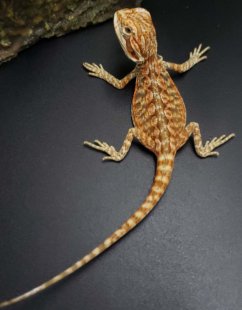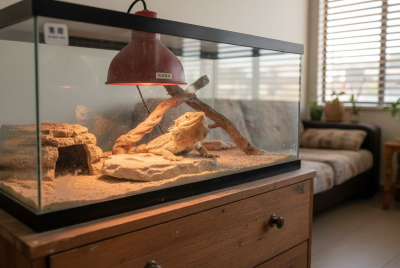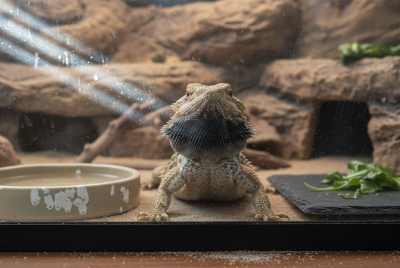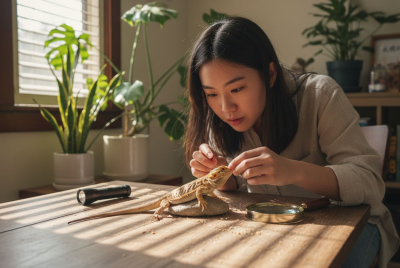Bearded Dragon Leatherback: Care Guide
Are you thinking about getting a Leatherback Bearded Dragon? Or maybe you already have one and want to ensure they live their best life? You’re in the right place! Leatherbacks are truly fascinating reptiles, and as an owner, it’s your responsibility to give them the love and care they deserve. Let me guide you through everything you need to know.
What Is a Leatherback Bearded Dragon?
Leatherback Bearded Dragons are a unique variation of the standard bearded dragon. What sets them apart is their smooth, almost scaleless skin. These reptiles are a product of selective breeding, making them a prized choice for reptile enthusiasts.
Unique Features of Leatherbacks
One of the first things you’ll notice about Leatherbacks is their smoother texture. Unlike standard bearded dragons, their reduced scalation gives them an almost velvety feel. This also allows their colors and patterns to pop, making them stand out in any collection.
Difference Between Leatherbacks and Standard Bearded Dragons
Leatherbacks have fewer scales and smoother skin compared to their standard counterparts. This gives them a more vibrant appearance and makes handling them feel less prickly. However, their skin also requires a bit more attention to keep it healthy.
Why Choose a Leatherback Bearded Dragon?
Their Appearance Is Stunning
Leatherbacks are real show-stoppers. Their reduced scales enhance their vibrant colors, making them look like little works of art.
They Have a Calm Personality
Just like standard bearded dragons, Leatherbacks are known for their gentle and docile nature. They’re perfect companions for both beginners and experienced reptile enthusiasts.
Great for Enthusiasts and Beginners
Because of their manageable size and temperament, Leatherbacks are a fantastic choice for anyone looking to start their reptile journey or expand their collection.
Setting Up the Perfect Habitat for a Leatherback Bearded Dragon
Creating a safe and comfortable environment is crucial for your Leatherback’s health and happiness.
Choosing the Right Tank Size
A 40-gallon tank is the minimum size for an adult Leatherback, but if you can go bigger, do it. They’ll appreciate the extra room to roam.
Lighting and Heating Requirements
Leatherbacks thrive in well-lit environments. Provide UVB lighting to help them synthesize vitamin D3, which is essential for calcium absorption. Keep the basking area between 95-110°F and the cool side around 75-85°F.
Substrate Options: What Works Best?
Avoid loose substrates like sand, as they can cause impaction if ingested. Opt for reptile carpets, tile, or paper towels for a safe and easy-to-clean setup.
Feeding Your Leatherback Bearded Dragon
What Do Leatherbacks Eat?
Leatherbacks are omnivores, so they’ll need a mix of insects (like crickets and dubia roaches) and vegetables (such as collard greens, squash, and bell peppers).
Foods to Avoid
Stay away from foods like avocado, rhubarb, and citrus fruits—they can be toxic to bearded dragons. Also, avoid wild-caught insects as they may carry pesticides or parasites.
Supplements for Healthy Growth
Dust their food with calcium and multivitamin powders to ensure they get all the nutrients they need for strong bones and vibrant health.
Caring for Their Unique Skin
Why Skin Care Matters
Because of their smoother skin, Leatherbacks are more sensitive to environmental changes. Proper care is essential to prevent issues like dryness or shedding problems.
Bathing and Hydration Tips
Offer a shallow warm bath once a week to keep their skin hydrated and aid in shedding. Always supervise bath time to ensure safety.
Handling Leatherbacks Without Stressing Them Out
Be gentle when handling your Leatherback. Support their entire body and avoid grabbing them by the tail.
Common Health Concerns in Leatherbacks
Recognizing Illness Early
Watch for signs like lethargy, lack of appetite, or changes in behavior. These could indicate illness and warrant a trip to the vet.
Preventive Care Tips
Regular vet checkups, a clean habitat, and a balanced diet can help prevent most health issues.
Breeding Leatherback Bearded Dragons
Understanding Genetics
Leatherbacks are the result of specific genetic pairings. If you’re planning to breed, research the genetics thoroughly to avoid complications.
Ensuring a Safe Breeding Environment
Provide separate enclosures for males and females until breeding time. Afterward, ensure the female has a safe and comfortable place to lay her eggs.
Conclusion
Leatherback Bearded Dragons are a joy to own and care for. With their stunning appearance and calm nature, they make amazing pets for enthusiasts and beginners alike. By providing the right habitat, diet, and care, you’ll ensure your Leatherback thrives for years to come.
FAQs
1. What’s the lifespan of a Leatherback Bearded Dragon?
Leatherbacks typically live 8-12 years with proper care.
2. Can Leatherbacks live with other bearded dragons?
It’s best to house them alone to avoid territorial disputes.
3. Do Leatherbacks shed differently than standard bearded dragons?
Their shedding process is similar, but their smoother skin may make it seem less noticeable.
4. How often should I feed my Leatherback?
Young dragons should eat daily, while adults can be fed every other day.
5. Are Leatherbacks more expensive than regular bearded dragons?
Yes, due to their unique genetics and appearance, they often cost more than standard varieties.




